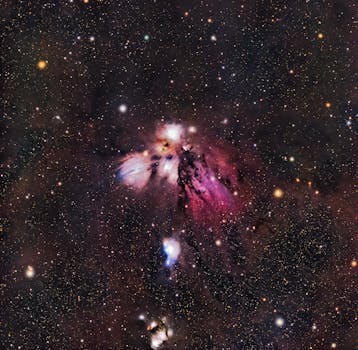
“
Introduction to Beyond the Milky Way
Beyond the Milky Way: Imagining New Worlds and Possibilities is an intriguing concept that has captivated human imagination for centuries. The idea of exploring the unknown regions of the universe, discovering new worlds, and unlocking the secrets of the cosmos is a fascinating topic that has sparked debate and discussion among scientists, philosophers, and space enthusiasts. In this article, we will delve into the realm of space exploration, discussing the possibilities and challenges that lie beyond our galaxy, and the potential for discovering new worlds and life forms.
The Milky Way and Beyond
The Milky Way is our home galaxy, a barred spiral galaxy that contains hundreds of billions of stars, stellar remnants, interstellar gas, dust, and dark matter. The Milky Way is just one of the billions of galaxies that make up the observable universe, and there are many more galaxies beyond our own that remain unexplored. The universe is vast and complex, with billions of galaxies, each containing billions of stars and potential planets. The possibility of discovering new worlds and life forms beyond the Milky Way is an exciting prospect that has driven space exploration and research.
Possibilities and Challenges
Imagining new worlds and possibilities beyond the Milky Way is a complex and challenging task. The distances between galaxies are vast, and the technology to travel to other galaxies is still in its infancy. However, scientists and engineers are working on developing new technologies, such as faster-than-light travel and advanced propulsion systems, that could potentially make intergalactic travel possible. The discovery of exoplanets, planets that orbit stars other than the Sun, has also opened up new possibilities for finding life beyond the Milky Way.
Takeaways
- The universe is vast and complex, with billions of galaxies, each containing billions of stars and potential planets.
- The possibility of discovering new worlds and life forms beyond the Milky Way is an exciting prospect that has driven space exploration and research.
- The distances between galaxies are vast, and the technology to travel to other galaxies is still in its infancy.
- Scientists and engineers are working on developing new technologies, such as faster-than-light travel and advanced propulsion systems, that could potentially make intergalactic travel possible.
Conclusion
In conclusion, imagining new worlds and possibilities beyond the Milky Way is a fascinating topic that has captured human imagination for centuries. The possibility of discovering new worlds and life forms beyond our galaxy is an exciting prospect that has driven space exploration and research. While the challenges are significant, scientists and engineers are working on developing new technologies that could potentially make intergalactic travel possible. As we continue to explore the universe, we may uncover new and exciting possibilities that will challenge our current understanding of the cosmos and inspire new generations of space enthusiasts.





